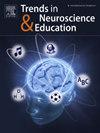小学教师对神经神话的信仰:一项11个国家的跨国研究
IF 3
Q2 NEUROSCIENCES
引用次数: 0
摘要
本研究比较了不同文化和语言背景下小学教师对脑功能和学习相关神经神话的看法。探讨和分析了两个主要的研究问题:“小学教师相信哪些神经神话?”以及“小学教师中这些神经神话的正式和非正式来源是什么?”方法采用8种语言版本的《多语种神经神话识别问卷》,对11个国家的1257名小学教师进行调查。描述性调查设计探讨了神经神话的流行以及塑造教师对学习和智力理解的来源。结果21个神经误区中有13个在所有被调查的国家普遍存在。值得注意的是,超过90%的参与者同意多元智能和学习方式的理论。这些误解主要是通过正式来源获得的,例如教师培训方案和专业讨论会,以及通过专业经验和个人直觉。相比之下,非正式来源,如媒体和流行文化,似乎在形成这些信念方面发挥了次要作用。结论教师神经神话的持续存在凸显了教师教育中对循证神经科学和认知心理学内容的迫切需求。这项研究强调了将循证神经科学和认知心理学整合到教师教育计划中的迫切需要。对神经神话的广泛信仰凸显了当前教育政策和实践中的严重差距。为解决这一问题,需要制定协调的国家和国际战略,向教育部和决策者通报这些误解的普遍性和影响。本文章由计算机程序翻译,如有差异,请以英文原文为准。
Belief in neuromyths among primary school teachers: A cross-national study of 11 countries
Background
This study compares primary school teachers' beliefs in neuromyths related to brain function and learning across different cultural and linguistic contexts. Two main research questions are explored and analyzed: “Which neuromyths are believed by primary school teachers?” And “What are the formal and informal sources of these neuromyths among primary school teachers?”
Methods
Data were collected from 1257 primary school teachers in 11 countries using the Multilingual Neuromyths Identification Questionnaire, available in eight languages. The descriptive survey design explored the prevalence of neuromyths and the sources that shape teachers' understanding of learning and intelligence.
Results
The findings indicate that 13 out of 21 neuromyths are prevalent in all of the countries that were surveyed. Notably, over 90 % of participants agreed with the theories of multiple intelligences and learning styles. These misconceptions are primarily acquired through formal sources, such as teacher training programmes and professional seminars, as well as through professional experience and personal intuition. In contrast, informal sources, such as the media and popular culture, appear to play a minor role in developing these beliefs.
Conclusions
The persistence of neuromyths among teachers underscores a critical need for evidence-based neuroscience and cognitive psychology content in teacher education. This study underscores the urgent need to integrate evidence-based neuroscience and cognitive psychology into teacher education programs. The widespread belief in neuromyths highlights serious gaps in current educational policy and practice. To address this, coordinated national and international strategies are needed to inform ministries of education and policy makers about the prevalence and impact of these misconceptions.
求助全文
通过发布文献求助,成功后即可免费获取论文全文。
去求助
来源期刊

Trends in Neuroscience and Education
NEUROSCIENCES-
CiteScore
6.30
自引率
6.10%
发文量
22
审稿时长
65 days
 求助内容:
求助内容: 应助结果提醒方式:
应助结果提醒方式:


